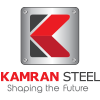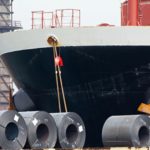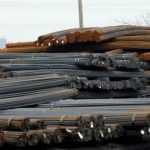The steel industry is a pillar of economic development and in South Asia and the Middle East, the industry has maintained the development of infrastructure, construction and industry. With Pakistan aiming at achieving economic stability, it is imperative to compare its steel industry with the regional markets like India, China, and the Middle East to determine its position and the ability to compete.
One of the most successful steel manufacturing companies in Pakistan is Kamran Steels that produces high quality rebars and structural steel that are of both national and international standard. Having experience in the steel industry over decades, the company has become a household name in the construction and infrastructure industries of the nation. More information is available on Kamran Steel’s Quality Assurance page.
The Steel industry in Pakistan: An overview.
The steel industry in Pakistan is extremely reliant on imported raw material especially scrap, billets, and iron ore. The industry in the country is relatively small with an annual production capacity of about 6-7million tons as compared to its neighbors.
Key Features:
- Excessive dependence on imported scrap and billets.
- A domestic demand fuelled by construction and infrastructure works.
- Expansion was closely related to government finances, PSDP grants, and real estate building.
Kamran Steels role: Kamran Steels is a leading domestic player.It has put money in the modern facilities and effective supply chains, and it can compete with regional imports and guarantee reliable local industries with the quality of steel.
Kamran Steels: Strengths vs. Industry Challenges
| Industry Challenge | Impact on Steel Sector | Kamran Steels’ Advantage |
| Import Dependence on Raw Materials | Increases cost due to duties & global price fluctuations | Strong recycling systems and secure supply chains reduce dependency |
| Rising Energy Tariffs | Higher production costs for mills | Investment in energy-efficient technology & alternative fuels |
| Inflation & Reduced Purchasing Power | Slows construction demand | Competitive pricing & strong domestic presence support contractors |
| Competition from Imports (China, CIS countries) | Local producers face price pressure | Focus on international quality rebars and timely delivery builds trust |
| Need for Sustainable Practices | Pressure to meet global environmental standards | Adoption of eco-friendly, sustainable production methods |
| Demand for Housing & Infrastructure | Surging steel consumption | Flexible production capacity to scale up for mega projects |
India: A Growing Steel Giant
The second largest steel manufacturer in the world is India with a production of over 125 million tons each year. Contrary to Pakistan, India possesses a big home iron ore foundation lowering its dependency on imports.
Strengths of Indian Market:
- Abundant raw material reserves (iron ore & coal)
- Strong government support for infrastructure growth
- Export potential due to scale of production
China: The Global Leader
China is the most dominant player in the world steel market with a statistic of more than 1 billion tons of steel every year that is over half of the world steel production. Chinese steel policies have a direct impact on the world steel prices including the Pakistan market.
Key Features of Chinese Market:
- Advanced technologies and energy-efficient production
- State-owned enterprises with massive economies of scale
- Capability to impact world supply chains.
Impact on Pakistan:
Cheap Chinese steel usually penetrates into Pakistan via imports, and this has posed competition to the producers of local steel such as Kamran Steels. The domestic players of Pakistan, however, respond to this by laying emphasis on quality, delivery time and robust supply chains.
Middle East: Oil and Infrastructure-led Demand.
The Middle East steel market, especially in UAE and Saudi Arabia, is in massive demand because of mega infrastructure projects, oil surplus, and future events such as Saudi Vision 2030.
Strengths of Middle East Market:
- Focus on high-grade construction steel
- Large-scale demand due to housing and mega projects
- High imports as a result of unavailability of raw materials.
Comparison with Pakistan:
Both Pakistan and the Middle East are import-intensive, yet, Pakistan is more endowed with domestic steel production in comparison with its domestic consumption requirements. In Middle Eastern markets, nevertheless, it is more export oriented and globalized.
Pakistan’s Strengths in the Regional Context
Nevertheless,Kamran Steels as a steel industry in Pakistan has some advantages that are special:
- Increasing Domestic Demand – CPEC projects, housing schemes and urbanization.
- Emerging Local Producers – Companies such as Kamran Steels are using energy saving technology in order to cut down expenses.
- Favorable Geographical Positioning- Pakistan is situated between China, India, Central Asia and the Middle East, and it could work as a possible steel trading centre.
Comparative Snapshot: Pakistan vs. Regional Steel Markets
| Country/Region | Annual Production | Strengths | Challenges for Pakistan |
| Pakistan | 6–7 million tons | Rising demand, modern mills | Import dependence, high costs |
| India | 125+ million tons | Large iron ore reserves, cost-effective | Scale & pricing competition |
| China | 1+ billion tons | Global leader, tech-driven | Price pressure, imports |
| Middle East | 40–50 million tons (mainly demand) | Mega projects, high imports | Stronger buying power |
Conclusion
Compared to India, China, and the Middle East, the steel industry of Pakistan is still smaller but has a strategic position. With domestic demand, modern producers and its distinctive geographic position, Pakistan can become a regional center in case the country can handle the dependence on imports, energy prices, and inflation. More on Kamran Steel’s approach and the broader industry context can be found via their contact page and steel market analyses.
Kamran Steels has been and still has a pivotal role to play as Pakistan seeks to stay viable, strong and future-oriented in the vibrant regional steel industry.





Recent Comments